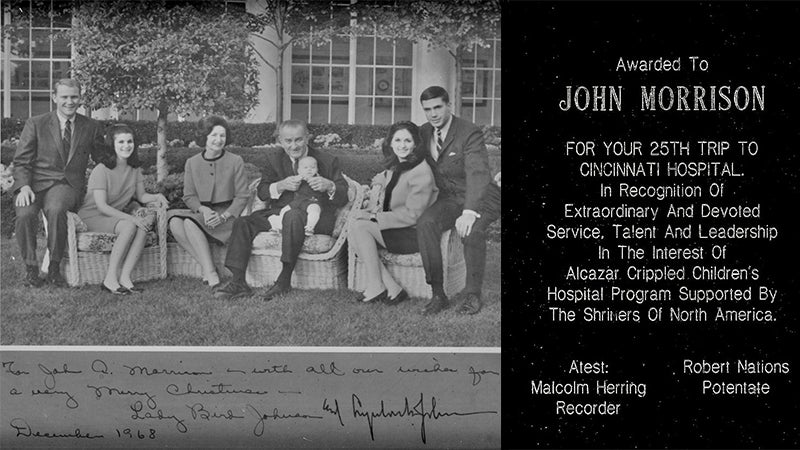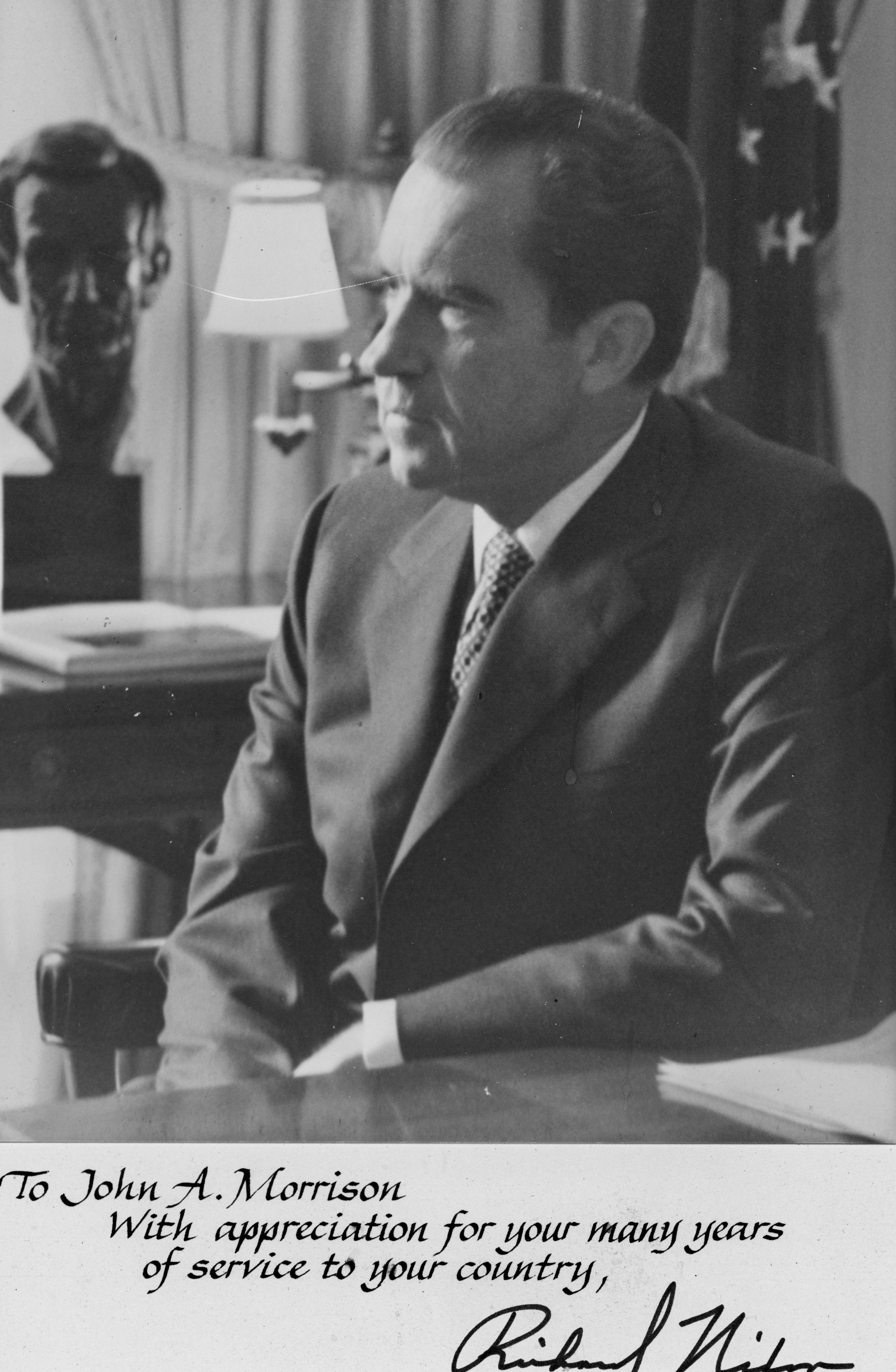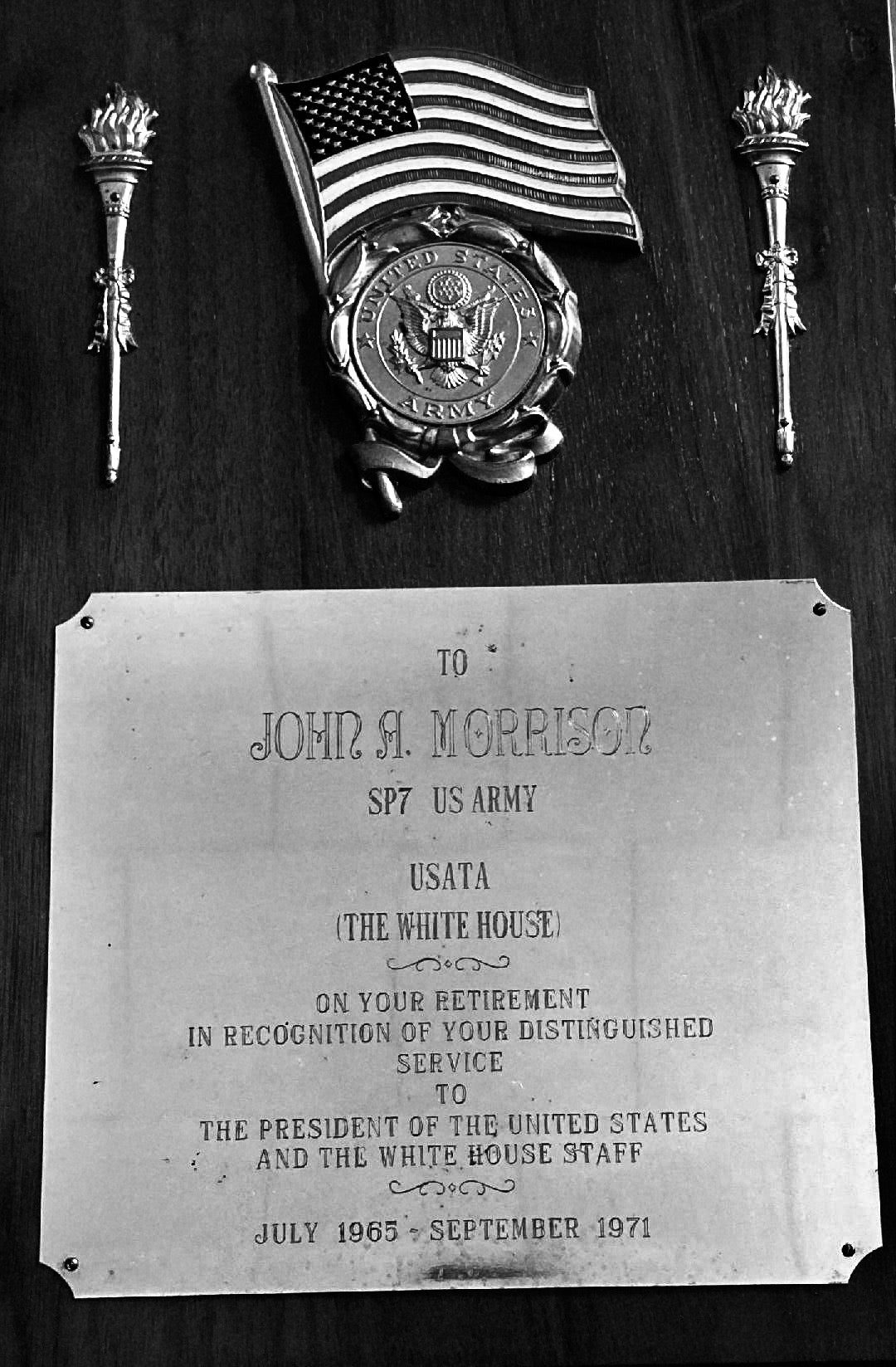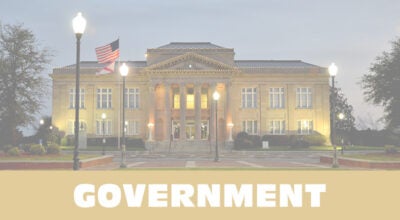John A. Morrison, Sergeant, U.S. Army, Korean War From Korea to the White House Motor Pool – Part 2
Published 1:00 pm Friday, June 30, 2023

- LEFT: Christmas photo inscribed to John Morrison by President Lyndon B. Johnson and Lady Bird Johnson, 1968. [Photo: John Morrison] RIGHT: Plaque given to John Morrison, commemorating his 25 trips, taking children to the Shriner's Hospital in Cincinnati. [Photo: John Morrison]
|
Getting your Trinity Audio player ready...
|
After his tour at Redstone Arsenal, Sgt. John Morrison was assigned to Fort Riley, Kansas, where he served as Transportation Sergeant for four years. Fort Riley is home of the 1st Infantry Division [The Big Red One]. Morrison said that he spent much of his time chauffeuring congressmen and generals. He was not deployed to Vietnam because of having contracted malaria in Korea. Instead of going to Vietnam, Morrison was assigned to the White House Motor Pool for the next six years.

President Richard M. Nixon presented this inscribed photo to John Morrison upon his retirement in 1971. [Photo: John Morrison]
After his retirement, Morrison moved to Dale City, Virginia, and became a dealer for The Washington Post. He bought newspapers from the paper and resold them to delivery boys.
After eight years, he moved to Florala, Alabama, in 1979.

Plaque presented to John Morrison by the White House upon his retirement in 1971. [Photo: John Morrison]
There is no record of the total number of trips made by Morrison, but he received a plaque [which is pictured] for making 25 trips to Cincinnati alone. He was usually accompanied on the trips by his wife, Vivianne, and occasionally her sister, Navis Spring.
Of the many children that he drove to Shriner’s Hospitals, Morrison still remembers two that were very special. One little boy had suffered severe burns over most of his body. At the hospital in Cincinnati, he underwent treatment that replaced his skin with skin grown in labs at the hospital. On the return trip to pick up the child, John could hardly believe the miracle that had taken place.
The second patient that Morrison remembered was a young four-month old baby. The baby suffered from a severe cleft palate that ran to the sides of the face, almost to the ears. After a few months, Morrison was sent to bring the baby back home. When he arrived at the hospital, John went up to the floor to pick up the baby. He remembered that he walked past a nurse carrying a baby and did not realize it was the same baby he had brought. The transformation was unbelievable. The stiches from the surgery were on the inside and the outside incisions had been glued together. Morrison noted this was another miracle accomplished by Shriners and God.
John quit driving for Shriner’s Hospitals in 1990 because of his wife’s declining health. She died in December 2009. Vivianne’s sister, Navis Spring, had lost her husband and had been helping Vivianne and John for several years. John had begun losing his sight and needed someone to help him at home and to drive him to doctor’s appointments. Navis had been John’s bookkeeper and chauffeur for several years after her sister’s death. Vivianne wanted Navis to marry John after her death so that he would be taken care of. John and Navis were finally married in August 2019. Because of Covid-19, Navis was unable to get her name changed at the time.
John Vick
The author feels especially privileged to tell John Morrison’s story. It’s not often that a soldier’s military service is overshadowed by his service to others after he had retired. Thanks to John, his wife, Navis, and his son, Kenneth, for allowing me to tell his story. John Morrison may be blind, but he still sees with his mind’s eyes.





